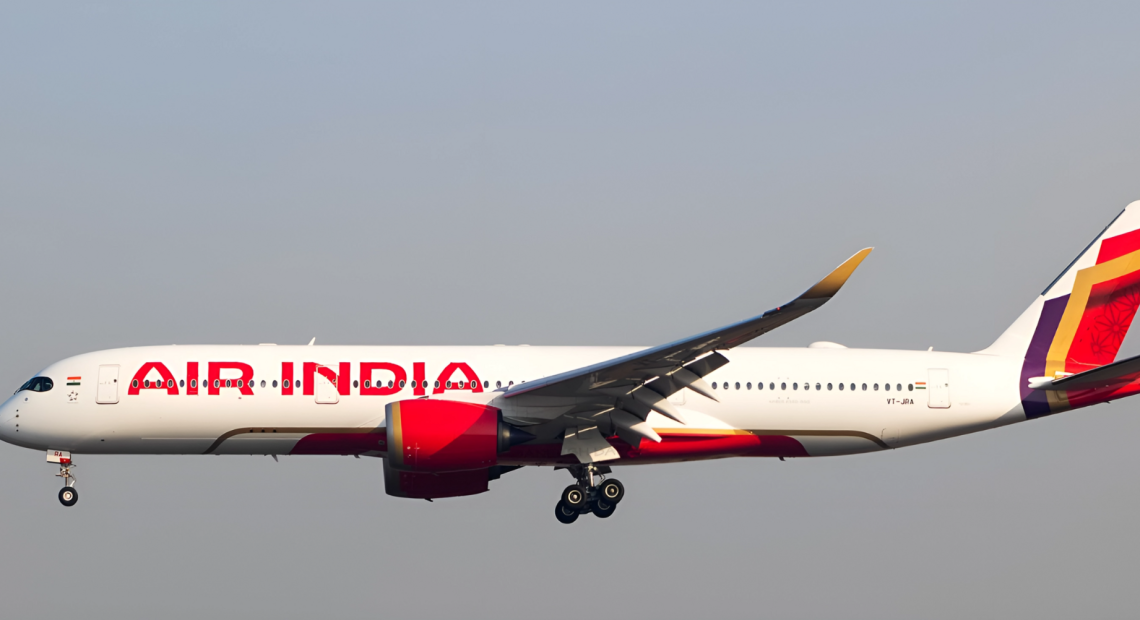
Preliminary Analysis of Dual Engine Shutdown in B787-8 VT-ANB
On 12 June 2025, Air India Flight AI171, operated by a Boeing 787-8 aircraft registered as VT-ANB, experienced a dual engine shutdown shortly after takeoff from Sardar Vallabhbhai Patel International Airport, Ahmedabad. The aircraft was en route to London Gatwick and carried 230 passengers, 10 cabin crew, and 2 flight crew. The incident led to the loss of all 12 crew members and 229 passengers, along with 19 fatalities on the ground.
Flight Sequence and Data Overview
According to preliminary data retrieved from the aircraft’s forward Enhanced Airborne Flight Recorder (EAFR), the aircraft began its takeoff roll at 08:07:37 UTC and lifted off at 08:08:39 UTC. Key speeds were achieved on schedule: V1 at 153 knots, Vr at 155 knots, and V2 at 162 knots. At 08:08:42 UTC, the aircraft reached a peak indicated airspeed of 180 knots. Almost immediately after this point, both engines shut down due to the fuel control switches transitioning from RUN to CUTOFF within a one-second interval.
The cockpit voice recording captured one pilot questioning the cutoff, to which the other responded with a denial. This exchange suggests that the shutdown was not commanded by the crew.
Engine Shutdown and Recovery Attempt
Following the engine shutdown, the Ram Air Turbine (RAT) deployed, indicating a loss of electrical and hydraulic power. The aircraft’s automatic systems initiated recovery procedures, including APU autostart and relighting logic. Engine 1 showed signs of relight and increasing core speed, whereas Engine 2 failed to recover, despite repeated fuel reintroduction attempts. Both fuel control switches were returned to RUN by the crew within 10 seconds of the initial cutoff.
The aircraft continued to lose altitude and impacted multiple buildings approximately 0.9 nautical miles from the end of Runway 23. The EAFR stopped recording at 08:09:11 UTC. A MAYDAY call was transmitted at 08:09:05 UTC, but no further communication was received.
Fuel Control Switch System and Related Safety Advisory
The Boeing 787 is equipped with a fuel control switch system that includes a locking mechanism designed to prevent accidental disengagement. The FAA issued Special Airworthiness Information Bulletin (SAIB) NM-18-33 in December 2018, addressing potential disengagement risks related to the locking feature. While not mandatory, this advisory applied to switches similar to those installed on VT-ANB (part number 4TL837-3D).
Air India did not conduct inspections outlined in the SAIB, as they were not mandated by any Airworthiness Directive (AD). Maintenance records show the throttle control module was replaced in 2019 and again in 2023, but there was no record of any related defects or discrepancies in the fuel control switches.
Preliminary Scenarios Considered
The investigation has so far not attributed the fuel cutoff to pilot action, and several potential technical causes are being considered:
Mechanical failure or internal disconnection within the fuel control switch assembly.
Electrical anomaly resulting in uncommanded shutdown through erroneous signals.
Software logic or FADEC miscommunication.
Post-crash analysis has ruled out bird strike, sabotage, or fuel contamination. The cockpit controls, including thrust levers and flap handles, were found in normal takeoff configuration at the time of impact.
Recorder and System Analysis
The forward EAFR yielded 49 hours of usable flight data, including the accident flight and two hours of cockpit voice recordings. The aft EAFR was too damaged for data retrieval. The audio and digital data were recovered using a golden chassis and cables sourced from the NTSB.
As of this preliminary stage, no system-wide safety recommendations have been issued for the Boeing 787-8 or the GE GEnx-1B engines. Additional analyses are ongoing, including teardown of the fuel control modules and toxicology testing of the crew.
Public Summary
Initial findings indicate that both engines of the aircraft shut down within seconds after takeoff, but not due to pilot error. A backup power system was triggered and one engine began recovery, but the aircraft could not maintain altitude. Investigators are analyzing whether the shutdown was caused by a system fault, switch malfunction, or electrical issue. The exact cause remains under investigation.


















